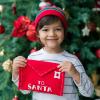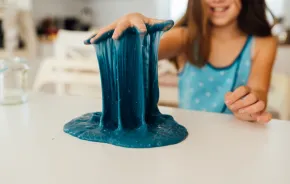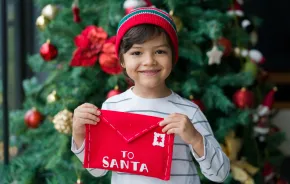
Photo:
Christmas crackers are a fun holiday tradition invented in London
Tired of the same old holiday routine? Take a trip around the world and learn how other cultures and countries celebrate a variety of winter holidays such as Christmas, Hannukah, Winter Solstice, Three Kings’ Day, Kwanzaa and more.
Not only is it fun to try something new, but new traditions are a great way to connect to your family heritage or incorporate learning about other cultures into your child’s holiday experience.
Get ready for a trip around the world, no passport required.
Mexico
In Mexico, farolitos are a common sight along driveways and on the porches of private homes in December. These lanterns, made of paper bags with pretty patterns cut into the sides, light up the night. The bags are weighted with sand and lit with real candles.
Try making a kid-friendly farolito by letting the kids decorate brown or white sack lunch-sized paper bags. Add a couple of scoops of sand or gravel into the bottom of each sack and drop in a battery-operated tea light in place of a real flame for peace of mind.

Philippines
During December, streets in the Philippines are lit up with brightly colored parols, or paper lanterns. These 3-D star-shaped lights are traditionally made from bamboo sticks and rice paper. The star represents the star of Bethlehem the three wise men followed to find Jesus.
If this project is too tricky for little hands, try hanging decorated paper stars around your home for a similar effect. Simply cut out star shapes from paper or cardboard, punch a hole near the top for hanging, and let the kids decorate with markers, glitter, paint and crayons. Or you can purchase a kit for making a Parol if you want to give the real thing a try!
Germany
In Germany, children celebrate St. Nicolas Day on Dec. 6. Known for giving to the poor, St. Nicolas is thought to be the origin of Santa Claus. According to legend, St. Nick will leave treats for young children in their shoes on the night of Dec. 5.
If you want to incorporate this tradition into your holiday celebration, have your kids leave their shoes on the porch, or outside of their bedroom, when they go to bed. While they are sleeping, fill their shoes with treats and prepare for excited kids in the morning!

Ireland
In Ireland, some families leave a candle on a windowsill and leave it burning throughout the night. The candle is a symbol of welcome and helps the faithful remember the story of Mary and Joseph looking for a place to stay the night before Jesus was born.
You can try this fun tradition at home by letting the kids decorate a clear mason jar as a candle holder. Use paint, glitter glue, or glued-on squares of tissue paper in festive colors. Place a battery-operated candle or tea light inside and put it on a windowsill on Christmas Eve.
France
A Buche de Noel, or Yule log cake, is a traditional Christmas dessert in France. A Buche de Noel usually is made from a sponge cake baked in a jelly roll pan, filled with chocolate buttercream frosting and rolled into a log shape. Bakeries in France strive to create these desserts to resemble actual logs complete with mushrooms and lichen made from fondant. You can bake your own Buche de Noel and decorate it in a forest theme with sprigs of rosemary, red hot candies and a dusting of powdered sugar for snow. Try using a mold if you are going for a realistic-looking log.

Italy
In December, Italians enjoy manger scenes, or prescpios, in their homes. You can continue this tradition with your children by including a nativity scene in your home’s Christmas decor. For younger children, check out durable, kid-friendly nativity sets such as Fisher Price Little People Nativity, Melissa and Doug Nativity, and Play Mobil Nativity, to name a few. You could even hide the baby Jesus and then secretly place him in his manger on Christmas Eve for the kids to find in the morning.
Norway
A fun Norwegian tradition is to celebrate “Little Christmas Eve” on Dec. 23. On this night, families gather and do activities such as trimming the tree or decorating gingerbread houses. Often, a traditional rice pudding is served topped with cinnamon, sugar and butter. An almond is hidden in the pudding, and whoever finds the nut will have good luck in the coming year. Other traditions involving the almond are that the finder must sing a song, or they might receive a pig made of marzipan.
Britain
England is the birthplace of Christmas crackers. Traditionally given to diners at Christmas dinner, Christmas crackers are made of cardboard tubes wrapped in colorful paper. When the ends are pulled apart, a cracker is activated, making a popping noise. Inside is a small toy or trinket, a paper crown (representing the three kings) and a joke. Christmas crackers are great fun for kids and adults alike.

Denmark
Danes enjoy a fun family tradition during the holiday season called “cut and paste day.” On this day, the whole family sits down and creates Christmas crafts and decorations. These projects often include the Danish woven heart basket. These are made of paper strips, usually in red and white which are the colors of the Danish flag. Hold your own cut-and-paste day with projects tailored to your family’s interests and abilities.
China
Those who celebrate Christmas in China often decorate their homes with red paper chains, red paper flowers and paper lanterns to symbolize happiness. Christmas trees are becoming popular and are called “trees of light.” You can add a Chinese touch to your Christmas decor by making paper chains of red paper, red tissue paper flowers, or making your home glow with red lanterns.

Israel
Hannukah, the Jewish festival of light, has its roots in the second century when the Maccabees reclaimed the ancient temple in Jerusalem. They found enough oil to light the menorah for only one day, but it lasted eight days in what is known as the Hanukkah miracle. This winter holiday is celebrated by lighting the menorah, gifts, eating foods cooked in oil, playing dreidel and giving out “gelt” chocolate coins wrapped in gold foil.
In America, the fried food most associated with Hannukah is potato latkes, but in Israel, jelly-filled doughnuts called sufganiyot are popular. Here is a great recipe for making your own.

Scandinavia Solstice or Yule Celebrations
Winter Solstice or Yule celebrations go back centuries and originated in Scandinavia (Denmark, Sweden and Norway) but are now practiced all over the world. Many of these pagan traditions have been absorbed into the Christian holiday of Christmas. In 2023, Winter Solstice is celebrated on Dec. 21, the shortest day of the year. After this day, the sun gradually comes back, with more light each day until the Summer Solstice. Celebrations revolve around light, nature and new beginnings. One fun activity to do with kids is to create orange bird feeders (oranges are a common Yule symbol, representing the sun) to offer to wildlife.
Kwanzaa
This holiday celebrates African-American culture from Dec. 26–Jan. 1 and is based on harvest traditions from West and Southeast Africa. Seven candles in the Pan-African colors of red, black and green represent the seven principles of Kwanzaa: unity (umoja), self-determination (kujichagulia), collective responsibility (ujima), cooperative economics (ujamaa), purpose (nia), creativity (kuumba) and faith (imani). The seven-day holiday ends in a communal feast.
Kids can make their own paper kinara (candleholder) and “light” one each night.

Three Kings’ Day, Guatemala
Three Kings’ Day (also called Epiphany) is Jan. 6, the day the wise men arrived bearing gifts to visit the Christ Child. Missionaries from Spain brought this tradition to Mexico and other Latin countries. In Guatemala, children leave out hay and water for the Kings’ camels, plus milk and cookies for the magi on the night of Jan. 5. On Jan.6, Three Kings Day is celebrated with children receiving presents from the magi, setting up nativity scenes and eating a sweet bread called Rosca de Reyes. Learn more about this sweet tradition from the Growing Up Bilingual blog and check out her easy rosca de reyes buns recipe.
Editor’s note: This article was originally published several years ago and was most recently updated in December 2023. This article contains affiliate links. If you purchase products through links on our site, ParentMap may earn an affiliate commission.
More holiday funAdorable Christmas Treats to Make With Kids 8 Sweet Ways to Send Your Letter to Santa Capturing Memories and Magic: 6 Tips for Better Holiday Photos |











